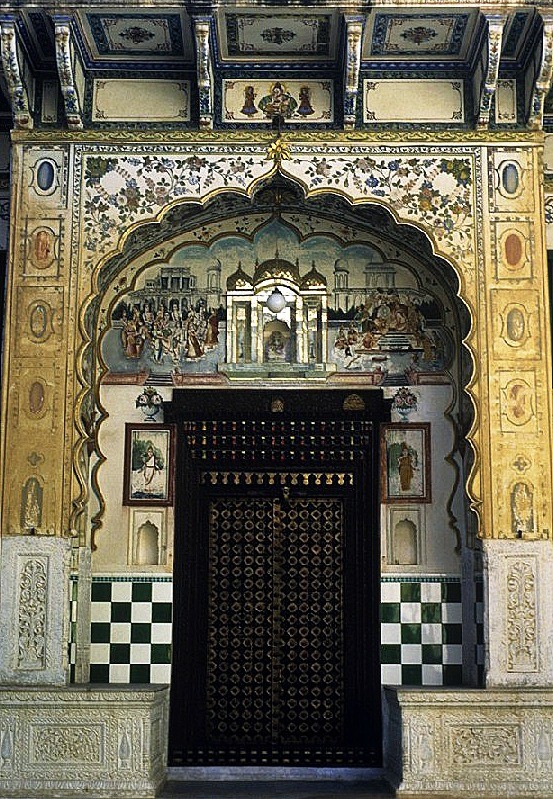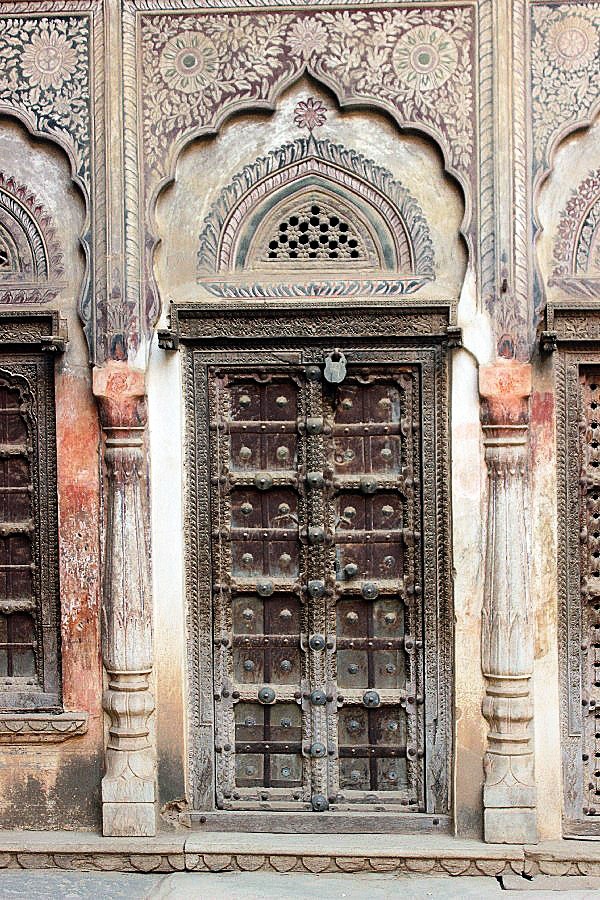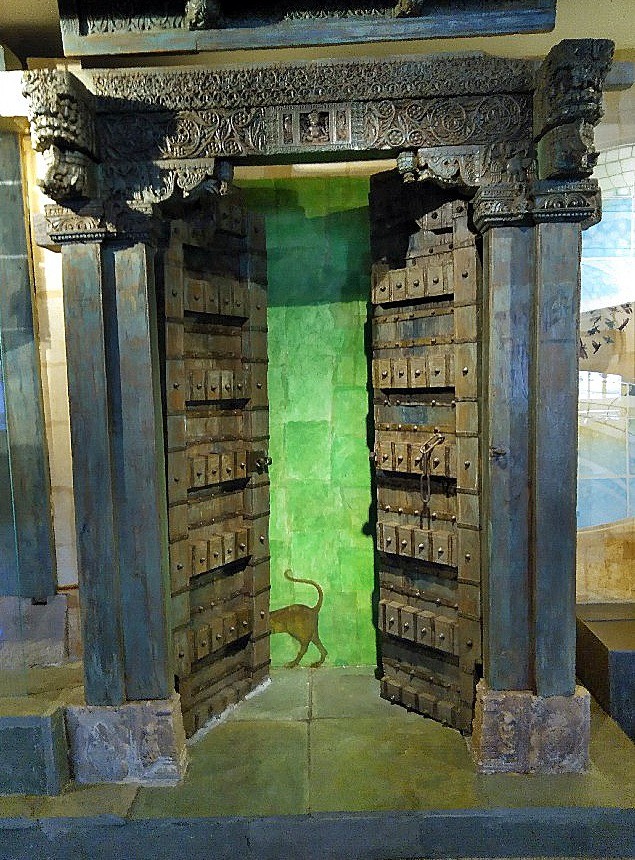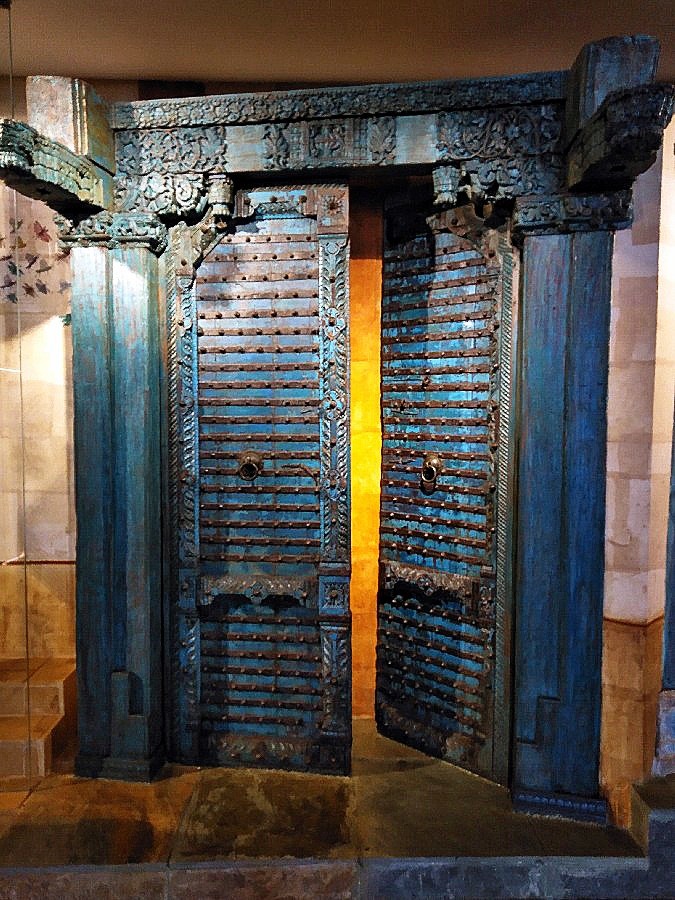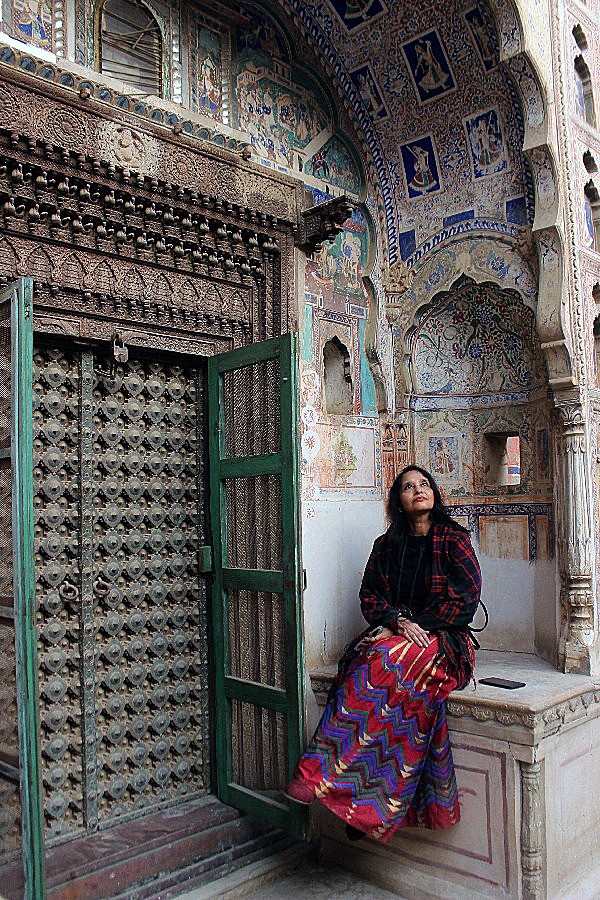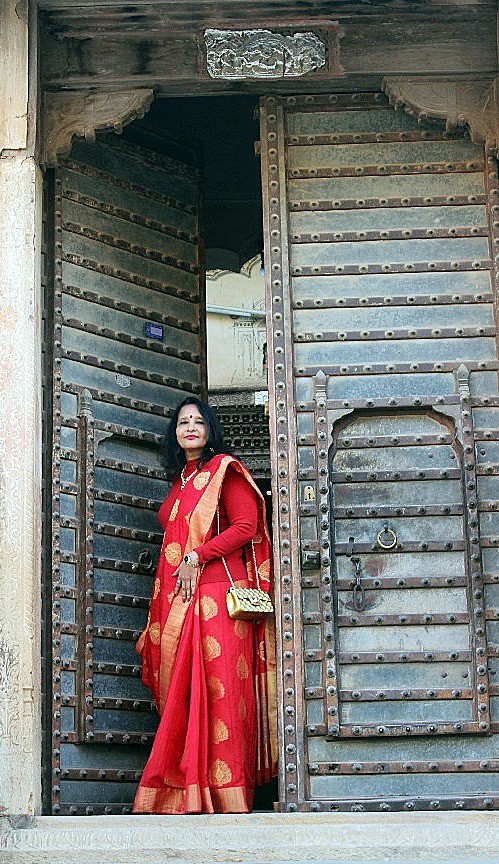India. Western India, comprising of traditional artistic and cultural zones, is full of ancient houses, palaces, forts, havelies, mansions, etc. These havelies or mansions are closed from all sides and have one big elaborately intricate main gate. An exquisite looking, intricately carved entry door is the front face of the haveli no matter whether it’s small or big.
The doors are the first thing that a visitor notices. A well structured, beautifully adorned, traditional-looking door impresses the onlooker quickly and compels him to visualise the beauty of the interiors. Most of these old Indian forts and havelies have double frame doors, unlike the modern single doors.
The havelies
A haveli is a traditional townhouse or mansion having historical and architectural significance. Many of these havelies, influenced by Rajasthani architecture, are found in the old cities of Jodhpur, Jaiselmer, Bikaner, and Shekhawati region in India and Lahore, Peshawar, and Hyderabad in Pakistan. Havelies in Nepal, though built in the Newari architectural style, are also artistically built with magnificent doors.
The doors
The exquisite centuries-old havelies, adorned with intricate carvings and never fading frescoes, are never complete without a gorgeous door. The onlooker just stands there in awe and admires the beauty. And indeed, they are all beautiful.
The doors are mostly made of wood encased in metal. You will also see steel doors in small havelies, and bronze doors in bigger havelies belonging to affluent families. In some havelies, the doors are also adorned with an old-styled lantern on sides of the entry which gives a warm feel to the house. Big mansions and fort doors are often framed by elaborately carved arched doorways adding a magical vibe to the door and entire building.
You also find various impressive designs on these doors, like the radiance of the rising sun, the captivating energy of the circles etc.
Each door tells a story, a unique one. If you walk enough of a neighbourhood, you will realise the traits of the doors of havelies in the area. You start feeling that they really belong to where they were built. The doors soon became your personal guides – guides who know everything, have seen everything, and whisper what is yet to come.
Importance of a door
The importance of a door should not be underestimated. The doorways are often associated with cultural identity and new beginnings. An ordinary-looking haveli of can become the neighbours’ envy by the look of the door. At times, the havelies even earn their names from the doors they have: haveli with engraved doors, a house with glass doors, vibrant doors, etc…
You get attracted to not only the doors, but also the versatile architectural history of the havelies. The facades, jharokha windows, intricate jali-work, and even staircases are compelling pieces of art. The structures break free from the surroundings to narrate a beautiful story showcasing the sheer beauty of the building.
Blessings from above
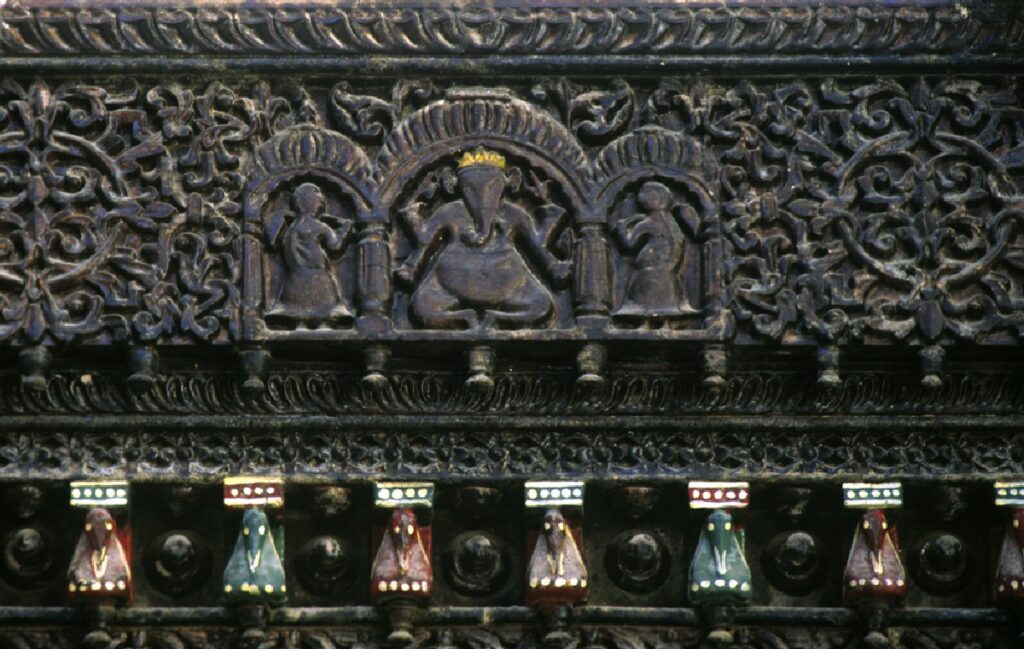
Every haveli has an idol of Lord Ganesha, the protector in Hinduism, placed on a door in one form or another. It can be either a statue or an image or an engraving of Ganesha placed on top of the doors.
Lots of bells are also hung on the doors in these havelies. The sound of bells is very auspicious and associated with prayers. The tinkling sounds of the bells also help to drive away the negative energy that is present in the space. Home is always treated as a temple in India, and the ringing of the bells brings along a lot of positivity.

